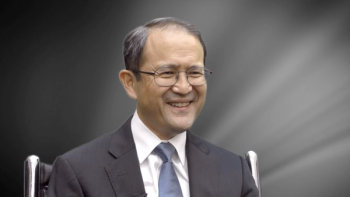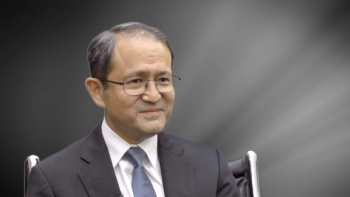
The CGRP inhibitors are poised to transform the treatment paradigm for patients with migraine and cluster headache.

The CGRP inhibitors are poised to transform the treatment paradigm for patients with migraine and cluster headache.

The Global Medical Lead for Migraine and Headache at Teva Pharmaceuticals, the therapy’s developer, discussed its performance in patients with medication overuse headache.

VY-AADC01 demonstrated promising early signs of activity and safety for patients with Parkinson disease.

The assistant professor of neurology at the University of Pennsylvania discussed the complication of cognitive issues faced by patients with epilepsy, and how these are being addressed in the clinic.

Impairment of physiological spindle activity in the hippocampus during NREM sleep by interictal epileptic activities may have negative consequences on long-term memory consolidation.

Henchcliffe discussed the progress that has been made in this area, and where things are headed going forward.

Several novel therapies in early stage development are beginning to show promise for patients with Huntington disease.

The director of the Pediatric Movement Disorders Program at UT Southwestern spoke about the ability of advanced imaging to help better understand the causes of disease.

Since the inception of the idea more than 3 decades ago and its initial development 20 years later, Sarepta Therapeutics’ micro-dystrophin gene therapy has now made its way to human trials.

Those suffering from significant emotional distress and sleep disturbances may benefit from targeted interventions to restore consolidated REM sleep or prevent the occurrence of fragmented REM sleep.

The director of the Comprehensive Multiple Sclerosis Center at Thomas Jefferson University discussed the concept of lymphocyte depletion to reset the immune system.

The smartphone application-led program, Floodlight Open, recently initiated in the US and Canada.

Results suggested that for every 1% of brain volume lost, a 51.7% increase in risk of clinically definite MS conversion was observed.

The goal of the free application is to make cognitive assessments routine in multiple sclerosis treatment.

The next important area of therapeutic development in MS appears to be in disease damage repair.

The monoclonal antibody has shown continued success up to 8 years in clinical trials.

One of the highly debated topics at ECTRIMS 2018 was the use of the investigational biomarker, neurofilament light, in the clinic.

The professor of neurology at Colorado University spoke about the ongoing phase IV trial to determine the safety of DMT discontinuation in MS.

Cellular therapies have the potential to make a meaningful difference for patients with neurological disorders, if used correctly.

IncobotulinumtoxinA significantly reduced unstimulated salivary flow rate for patients with sialorrhea.

This marks the first time a BTK inhibitor showed a clinical proof-of-concept in relapsing MS.

The Head of Global Clinical Development in Neurology at EMD Serono provided insight into the therapy's performance in phase IIb.

The director of Thomas Jefferson's Comprehensive Multiple Sclerosis Center spoke about the introduction of this treatment method into MS.

Patisiran maintained improvements in mNIS+7 and rapidly halted neurologic disease progression in hATTR amyloidosis.

The staff neurologist at Cleveland Clinic’s Mellen Center for Multiple Sclerosis spoke about the current understanding of the biomarker.

The Global Head of Neuroimmunology at Genentech discussed the upcoming phase III trial of ocrelizumab while on-site at ECTRIMS 2018.

An updated safety analysis of the therapy in patients with relapsing MS, up to 10 years, has shown no new safety signals.

Subcutaneous immunoglobulin is an effective and well-tolerated alternative to intravenous immunoglobulin for myasthenia gravis.

Eculizumab showed sustained activity and tolerability through 3 years for generalized myasthenia gravis.

The vice president of Medical Research at Biogen spoke about the intersection between high-quality data utilization and individualized medicine in multiple sclerosis.